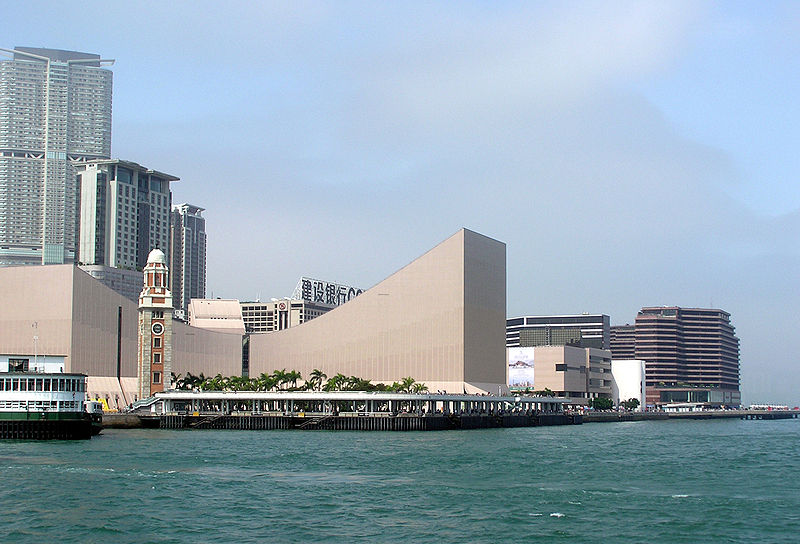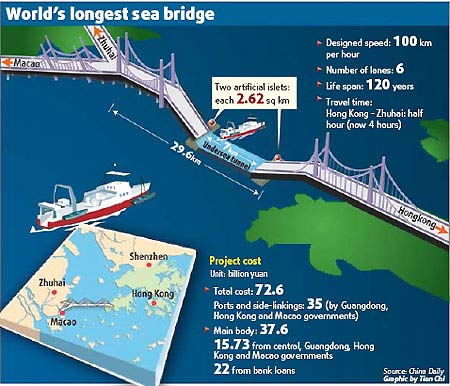Hong Kong !!
-

-
Tsim Sha Tsui (尖沙咀), often abbreviated as TST, is an urbanised area in southern Kowloon, Hong Kong. The area is administratively part of the Yau Tsim Mong District. Tsim Sha Tsui East is a piece of land reclaimed from the Hung Hom Bay now east of Tsim Sha Tsui. The area is bounded north by Austin Road and in the east by Hong Chong Road and Cheong Wan Road.

Geographically, Tsim Sha Tsui is a cape on the tip of the Kowloon Peninsula pointing towards Victoria Harbour. Several villages had been established in this location before Kowloon was ceded to the British Empire in 1860. Tsim Sha Tsui in Chinese means pointed sandy mouth. It was also known as Heung Po Tau (香埗é ), i.e. a port for exporting incense tree.

Tsim Sha Tsui is a major tourist hub in metropolitan Hong Kong, with many shops and restaurants that cater to tourists. Many of the museums in the territory are located in the area.
-
Tourist hospitality is a major industry in Tsim Sha Tsui. The area has the highest concentration of hotels in Hong Kong. Prominent and renowned hotels include The Peninsula, The Kowloon Hotel Middle Road, Hong Kong, Kowloon Shangri-La Hotel, the InterContinental, the Sheraton Hotel, three Marco Polo Hotels, The Langham Hong Kong as well as the Renaissance Hotel. The famed Hyatt Regency Tsim Sha Tsui Hong Kong was closed on 1 January 2006 for reconstruction of a shopping mall, while it has re-opened in October 2009 on Hanoi Road of Tsim Sha Tsui as a part of a new complex currently known as K11. Other hotels in virtually every price range, and level of luxury can be found throughout the area, Chungking Mansions is well known for providing cheap lodging for backpackers.

-
Tsim Sha Tsui is one of many places to find exotic restaurants in Hong Kong. Hillwood Road at the north of Observatory Hill concentrates restaurants of different national dishes. Knutsford Terrace on the other side of the hill is a terrace of pubs. Kimberley Street is famous for the Korean cuisine restaurants and grocery stores, especially after the advent of Korean Wave (韓�) in Hong Kong, giving the street the nickname of Koreatown (�韓國). Located on Nathan Road, the Chungking Mansions is a major tourist attraction in Tsim Sha Tsui. Georgetown Parade is well known for its dog nose biscuits. These recognizable buildings were featured in the film Chungking Express, and are full of inexpensive guest houses, Indian restaurants, and money changers.

-
-
Ping Tin and Tin Ping Estate sounds the same also beside Wan Chai and Chai Wan HEHE
-

-

-
Hong Kong-Zhuhai-Macau Bridge..
The in-construction Hong Kong-Zhuhai-Macau Bridge is a series of bridges and tunnels that will connect the west side of Hong Kong to Macau and the mainland Chinese city of Zhuhai, which are situated on the west side of the Pearl River Delta. The proposed 50 kilometres (31.1 mi) link is expected to cost US $10.7 billion.

With its length, it would become one of the landmarks within the area. Though overall length exceeds the Second Lake Pontchartrain Causeway in the United States, which is 38.4 kilometres (23.9 mi) long according to the Guinness Book of World Records, the longest bridge section (between the artificial islands containing the Macau exit of the tunnel and the Macau border facilities), which will include three cable-stayed spans with spans between 280 and 460 m, will be 22.8 kilometres (14.2 mi) long. Construction formally began on 15 December 2009. It is due to be completed in 2016.
-

-

-

-

-

-

-

-

-

-

-

-

-

-
The Peninsula Hong Kong (Chinese: 香港�島酒店) is one of the most internationally recognizable hotels in Hong Kong. Opened in 1928, it is Hong Kong's most historical hotel. It is located at the junction of Nathan Road and Salisbury Road in Tsim Sha Tsui, Hong Kong. Founded by members of the Kadoorie family, the hotel today is part of the Hongkong and Shanghai Hotels group headed by Sir Michael Kadoorie, is the flagship property of the The Peninsula Hotels group. The Peninsula has been voted the world's best hotel on several occasions, and is widely regarded as one of the region's legendary properties.

-
why u no film hong hong stars like andy lau or aaron kwok while in HK?
-
It opened in Tsim Sha Tsui, Kowloon, Hong Kong in December 1928, built with the idea that it would be "the finest hotel east of Suez." Passengers arriving in Hong Kong by ocean liner disembarked onto the quays of Kowloon plus, it was the last stop on the trans-Siberian rail link that brought travelers from Europe. As such, the Peninsula hotel was ideally situated to take advantage of the increasing number of wealthy visitors to the area.

The Peninsula before the Second World War.